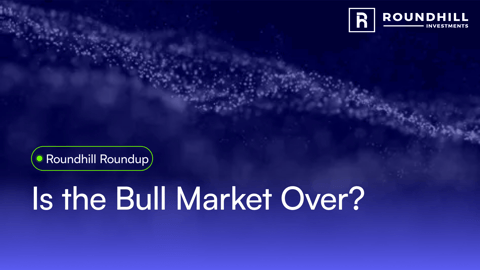Roundhill Roundup - Meme Mania
It has been roughly four and a half years since financial markets witnessed the rise of the retail trader with the OG meme stocks (GME and AMC) and their high volatility price action captivating investors. Fast forward to today, risk appetite has returned to financial markets and meme stocks could be making a comeback. The count of Bloomberg stories mentioning the word “meme” picked up in mid-July as stocks like Opendoor Technologies (OPEN), Kohl’s (KSS), and American Eagle Outfitters (AEO) surged with eye-popping returns.
Could the meme stock craze be returning to the market?

Anatomy of a Meme Stock
Meme stocks share recognizable DNA. They tend to be linked to eye-catching themes like quantum computing, next-gen nuclear/small modular reaction (SMR) developers, and “crypto-treasury” companies that hoard bitcoin on the balance sheet. Their trading profile is equally distinctive, represented by outsized volatility, relatively high short-interest, and elevated options activity (especially low-priced call options) that can magnify the gamma feedback loop.
Fundamentals often take a back seat to sentiment, with Reddit, X, and Discord chatter steering price action more than earnings or cash-flow metrics. One viral post can light the fuse. This cocktail of factors can lead to a boom-and-bust pattern in which narrative, structure, and an online retail crowd converge to create the quintessential meme-stock surge.
What’s Different Today?
However, the macro backdrop that fueled the 2020-2021 meme-stock frenzy looks very different today:
- Rates: The Federal Funds Target Rate has jumped from 0.25% in January 2021 to 4.50% today—a 425 basis point leap. The 10-year Treasury yield has followed suit, climbing from 0.91% to 4.20%.
- Inflation: YoY CPI has nearly doubled, rising from 1.4% to 2.7%.
- Labor market: Unemployment has fallen from 6.7% to 4.1%, a level generally viewed as full employment.
- Growth: Real GDP growth has swung from -1.0% YoY to +2.0%.
- Savings: The personal-saving rate has slipped from 11.8% to 4.5%, leaving households with thinner financial cushions.
- Hard assets: Gold is up 74% to $3,379 /oz, while WTI crude has advanced 37% to $65 /bbl.
- Crypto: Bitcoin has surged 266%, vaulting from roughly $31,000 to about $113,500

Over the past four years, the U.S. economy has moved onto firmer footing but within the constraints of a higher interest rate environment, raising the cost of borrowing for consumers and businesses. At the same time, investors no longer have the liquidity cushion that stimulus checks provided in the wake of the Covid-19 pandemic. At its peak, the U.S. personal savings surged to 32% of disposable income in April 2020 and 26% in March 2021. In our view, the abundance of “free money” was a key driver of the first meme stock frenzy, as an equally weighted basket composed of names like Gamestop (GME), Blackberry (BB), and Tilray (TLRY) soared to a cumulative price return of 541%.

Is There A Bull Case for Today’s Meme Stocks?
While the macroeconomic environment today is quite different from the early 2020s, it could be too soon to write off the potential of 2025’s meme stock surge. Since pre-pandemic days, retail investors have doubled their participation in the trading of U.S. stocks (SIFMA). So far, an equal weight basket of 2025’s meme stock darlings such as Opendoor Technologies (OPEN), Kohl’s (KSS), and American Eagle Outfitters (AEO) has rallied almost 60%. Compared to the >500% meme stock rally of the early 2020s, this could still be in the early innings.

From our vantage point, we see a handful of compelling bullish catalysts:
- What’s the next play? - With the S&P 500 three months off its April 2025 price lows, investors are searching for the next group of leadership stocks to capture upside in.
- Potentially lower interest rates - The Federal Reserve is facing mounting pressure to cut interest rates after a messy August 1st job report that hinted at a deteriorating labor market.
- “Fear of Missing Out” (FOMO) - FOMO could push investors to chase returns of high momentum names.
Of course, there are risks to meme stocks. These names have a greater propensity for volatility, and generally a clear disconnect from fundamental valuations. It will be crucial to stay nimble in such a fast-moving market.
Meme Culture Never Dies, It Rotates
Zero-commission apps, fractional shares, and online engagement from Reddit and X have integrated retail investors into the market for good. Retail cannot be ignored in modern-day markets. Investors armed with cheap options can overwhelm fundamentals in the short run and catalyze historic price momentum. In our view, the volatile, narrative-driven meme trade here to stay. While the names considered meme stocks may change, the meme culture never dies. It just rotates.
Glossary:
A meme stock refers to the shares of a company that have gained viral popularity due to heightened social sentiment. This is usually due to activity online and particularly on social media platforms. These online communities can dedicate heavy research and resources toward a particular stock. Meme stocks often have heavier discourse and analysis in discussion threads on websites like Reddit and posts on platforms such as X (formerly Twitter) and Facebook.
A bull is an investor who thinks the market, a specific security, or an industry is poised to rise. Investors who adopt a bull approach purchase securities under the assumption that they can sell them later at a higher price. Bulls are optimistic investors who are attempting to profit from the upward movement of stocks, with certain strategies suited to that theory.
Consumer prices (CPI) are a measure of prices paid by consumers for a market basket of consumer goods and services. The yearly (or monthly) growth rates represent the inflation rate.
The unemployment rate tracks the number of unemployed persons as a percentage of the labor force (the total number of employed plus unemployed). These figures generally come from a household labor force survey.
Gross domestic product (GDP) measures the final market value of all goods and services produced within a country. It is the most frequently used indicator of economic activity. The GDP by expenditure approach measures total final expenditures (at purchasers' prices), including exports less imports. This concept is adjusted for inflation.
The personal savings rate is personal saving as a percentage of disposable personal income.
This information is provided solely as general investment education. None of the information provided should be regarded as a suggestion to engage in or refrain from any investment related course of action. Investing involves risk, loss of principal is possible.
Not an offer: This document does not constitute advice or a recommendation or offer to sell or a solicitation to deal in any security or financial product. It is provided for information purposes only and on the understanding that the recipient has sufficient knowledge and experience to be able to understand and make their own evaluation of the proposals and services described herein, any risks associated therewith and any related legal, tax, accounting or other material considerations. To the extent that the reader has any questions regarding the applicability of any specific issue discussed above to their specific portfolio or situation, prospective investors are encouraged to contact 1-855-561-5728 or consult with the professional advisor of their choosing.
Forward-looking statements: Certain information contained herein constitutes “forward-looking statements,” which can be identified by the use of forward-looking terminology such as “may,” “will,” “should,” “expect,” “anticipate,” “project,” “estimate,” “intend,” “continue,” or “believe,” or the negatives thereof or other variations thereon or comparable terminology. Due to various risks and uncertainties, actual events, results or actual performance may differ materially from those reflected or contemplated in such forward-looking statements. Nothing contained herein may be relied upon as a guarantee, promise, assurance or a representation as to the future.
Use of Third-party Information: Certain information contained herein has been obtained from third party sources and such information has not been independently verified by Roundhill Financial Inc. No representation, warranty, or undertaking, expressed or implied, is given to the accuracy or completeness of such information by Roundhill Financial Inc. or any other person. While such sources are believed to be reliable, Roundhill Financial Inc. does not assume any responsibility for the accuracy or completeness of such information. Roundhill Financial Inc. does not undertake any obligation to update the information contained herein as of any future date.
Any indices and other financial benchmarks shown are provided for illustrative purposes only, are unmanaged, reflect reinvestment of income and dividends and do not reflect the impact of advisory fees. Investors cannot invest directly in an index.
Except where otherwise indicated, the information contained in this presentation is based on matters as they exist as of the date of preparation of such material and not as of the date of distribution or any future date. Recipients should not rely on this material in making any future investment decision. The performance data quoted represents past performance. Past performance does not guarantee future results. Current performance may be lower or higher than the performance data quoted.





